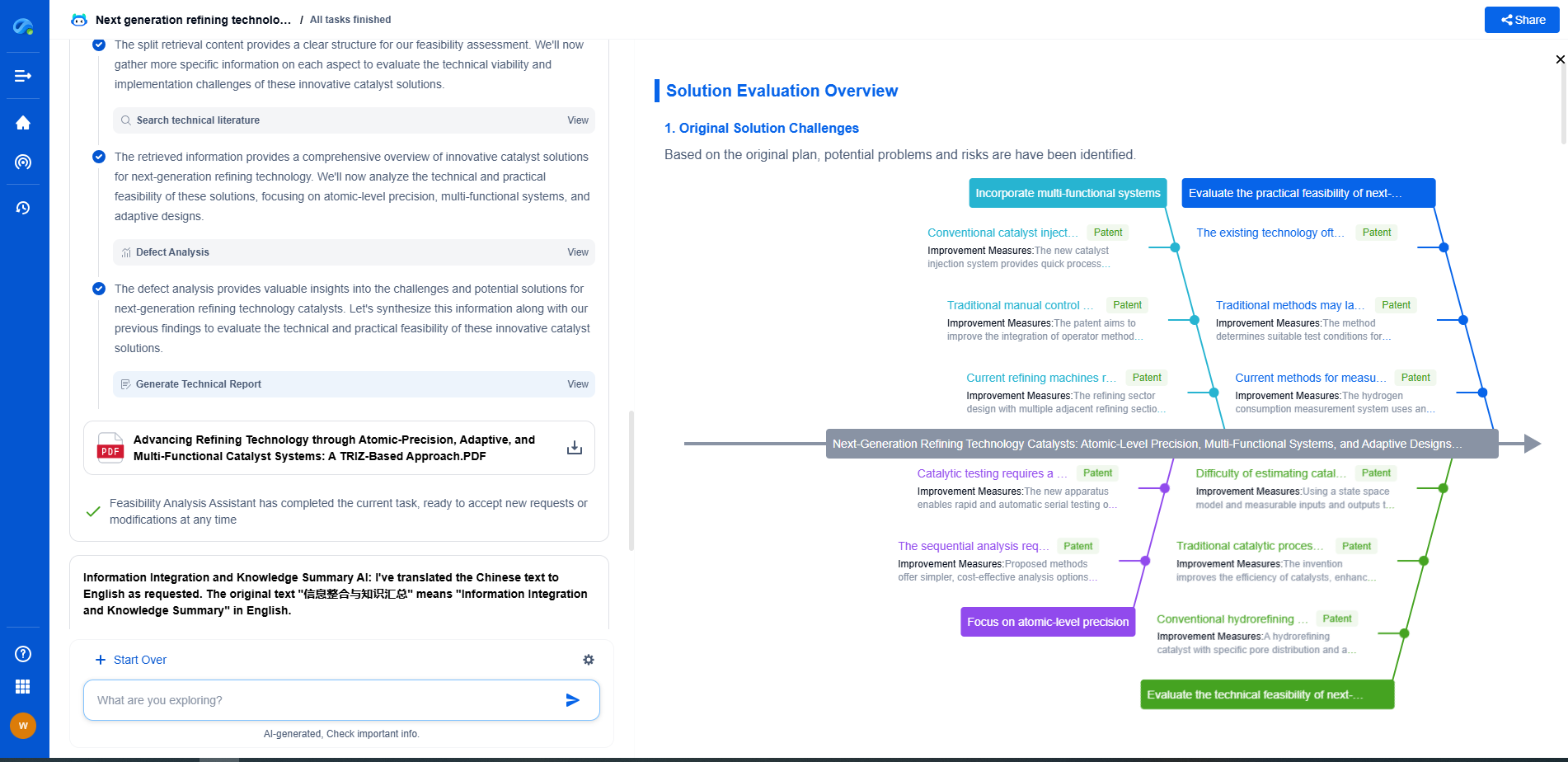AI-Based Signal Conditioning: Enhancing Force Sensor Accuracy in Real-Time
JUL 14, 2025 |
In today's rapidly evolving technological landscape, the integration of artificial intelligence (AI) with traditional sensor technologies has opened up new avenues for enhancing accuracy and efficiency. One such application is the use of AI for signal conditioning in force sensors, which are crucial in various industries such as robotics, healthcare, automotive, and manufacturing. This article delves into how AI-based signal conditioning is transforming the realm of force sensing by significantly improving accuracy in real-time applications.
Understanding Signal Conditioning in Force Sensors
Signal conditioning is an essential process in sensor systems, aimed at enhancing the quality of the sensor signals for better interpretation. For force sensors, which measure physical force and convert it into a readable signal, signal conditioning involves various operations including amplification, filtering, and analog-to-digital conversion. These processes ensure that the sensor outputs are reliable and accurate, which is crucial for applications that require precise force measurement.
The Role of AI in Signal Conditioning
AI technologies, particularly machine learning algorithms, have shown immense potential in refining the signal conditioning process. Traditional methods often struggle with noise reduction and non-linearities in sensor outputs. However, AI can train models to learn from data and recognize patterns, effectively filtering out noise and correcting any non-linear responses in real-time. This improvement in signal quality directly translates to more accurate force measurements.
Enhancing Real-Time Accuracy
One of the significant advantages of AI-based signal conditioning is its ability to enhance real-time accuracy. In dynamic environments where force sensors operate, changes can occur rapidly, necessitating quick adaptation. AI algorithms can process data swiftly and adjust the signal conditioning parameters on-the-fly, ensuring that the sensor maintains high accuracy despite varying conditions. This capability is particularly beneficial in robotics and automation, where precision and adaptability are paramount.
Case Studies and Applications
Several industries have already begun to incorporate AI-based signal conditioning into their systems with promising results. In the field of robotics, for instance, AI-enhanced force sensors are used in robotic arms to achieve delicate object handling without compromising on speed or accuracy. Similarly, in the automotive sector, AI-driven signal conditioning ensures precise force measurements in crash testing scenarios, contributing to improved safety standards.
In healthcare, force sensors equipped with AI signal conditioning are used in medical devices such as smart prosthetics and rehabilitation robots, offering enhanced sensitivity and responsiveness. These applications illustrate the transformative power of AI in enhancing sensor performance across diverse domains.
Challenges and Future Prospects
Despite its advantages, the integration of AI in signal conditioning is not without challenges. The development of robust AI models requires large datasets and significant computational resources. Additionally, ensuring that AI systems remain transparent and interpretable is crucial, especially in safety-critical applications.
Looking ahead, ongoing advancements in AI and sensor technology are expected to further elevate the capabilities of force sensors. As machine learning algorithms become more sophisticated and accessible, the potential for AI-based signal conditioning to optimize sensor performance will continue to grow, paving the way for innovative applications and solutions.
Conclusion
AI-based signal conditioning represents a significant leap forward in the realm of force sensing, offering enhanced accuracy and real-time adaptability. By effectively addressing the limitations of traditional signal processing methods, AI is poised to revolutionize the way force sensors are utilized across various industries. As we continue to explore the possibilities of AI integration, the future of force sensing looks promising, with the potential for unprecedented levels of precision and efficiency.
From 5G NR to SDN and quantum-safe encryption, the digital communication landscape is evolving faster than ever. For R&D teams and IP professionals, tracking protocol shifts, understanding standards like 3GPP and IEEE 802, and monitoring the global patent race are now mission-critical.
Patsnap Eureka, our intelligent AI assistant built for R&D professionals in high-tech sectors, empowers you with real-time expert-level analysis, technology roadmap exploration, and strategic mapping of core patents—all within a seamless, user-friendly interface.
📡 Experience Patsnap Eureka today and unlock next-gen insights into digital communication infrastructure, before your competitors do.
- R&D
- Intellectual Property
- Life Sciences
- Materials
- Tech Scout
- Unparalleled Data Quality
- Higher Quality Content
- 60% Fewer Hallucinations
Browse by: Latest US Patents, China's latest patents, Technical Efficacy Thesaurus, Application Domain, Technology Topic, Popular Technical Reports.
© 2025 PatSnap. All rights reserved.Legal|Privacy policy|Modern Slavery Act Transparency Statement|Sitemap|About US| Contact US: help@patsnap.com

